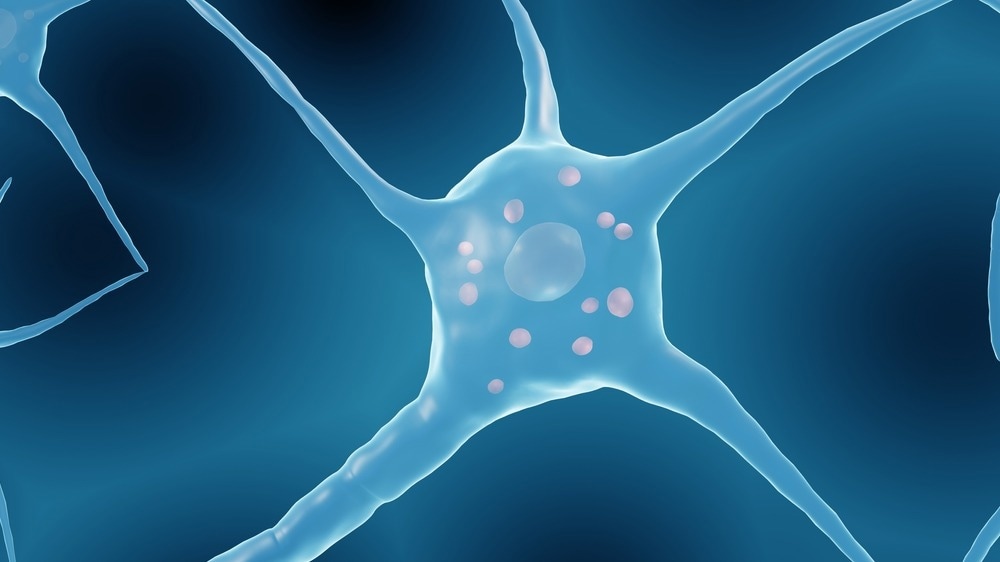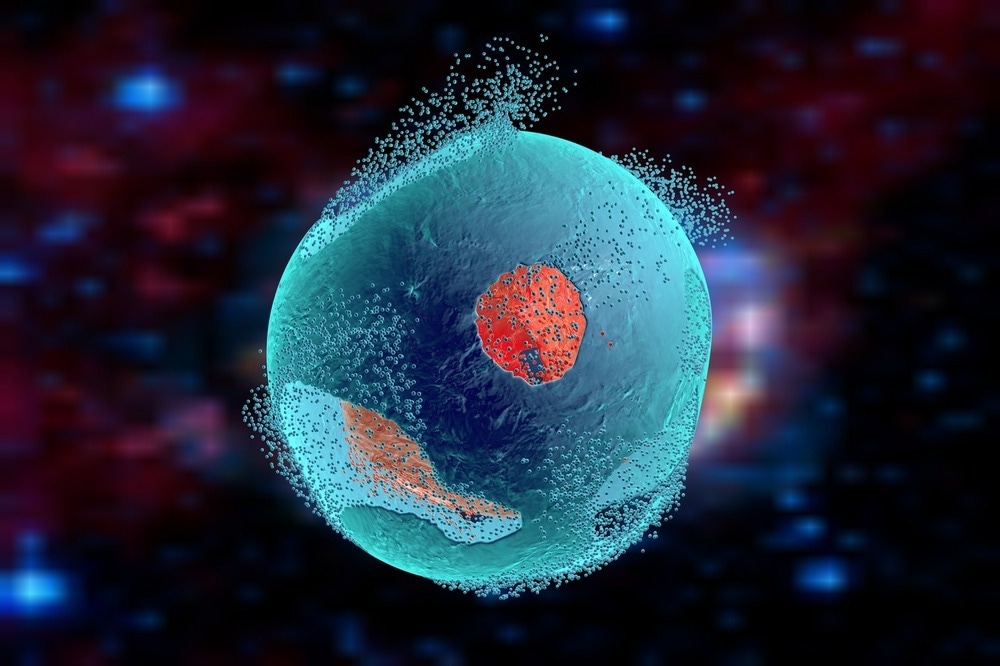Myristoylation: An Overview
The function of Myristoylated Proteins
Function as a Molecular Switch
Modification of Myristoylated Proteins
Signal Transduction and Apoptosis
Role in Disease
In Summary
References
This article will discuss the process of myristoylation, which plays a key role in several different biological processes and disease progression. It will provide a brief overview of several aspects of this subject.

Image Credit: ART-ur/Shutterstock.com
Myristoylation: An Overview
Myristoylation was discovered about three decades ago, and research in this field of life sciences has led to a deeper understanding of its significance in several processes. This process plays a key role in the signaling pathways of biological processes, with functions in immune function and carcinogenesis demonstrated by researchers.
It is a process wherein lipids are modified by the attachment of a myristoyl group to the N-terminal glycine residue’s alpha-amino group. The myristoyl group’s precursor is myristic acid, a fourteen-carbon fatty acid. Modification occurs both co- and post-translationally and is irreversible. It is the most common fatty acylation in multiple organisms such as plants, animals, protozoans, and fungi.
The process is mediated by the enzyme NMT (N-myristoyl transferase.) There are two distinct subunits within the crystalline structure of this enzyme. The myristoyl CoA unit binds at the N-terminal portion of the target protein, and the protein is bound by the enzyme C-terminal end.
The function of Myristoylated Proteins
Several proteins can be myristoylated and have numerous physiological roles. For instance, actin is a cytoskeleton structural protein and undergoes post-translational myristoylation during the process of apoptosis. Myristolated gelsolin up-regulates the cell’s anti-apoptotic properties.
Several myristoylated proteins play a role in plasma membrane association. Additionally, modified proteins are cellularly localized. The process both diversifies a protein’s function and gives the protein additional layers of regulation.
Function as a Molecular Switch
Myristoylation acts as a molecular switch. The myristoyl group’s orientation is regulated, causing a controlled and coordinated process. There are several types of myristoyl-conformational switches. Ligand binding, GTP binding, and other cell-mediated functions govern molecular switches.
Modification of Myristoylated Proteins
Several modifications can occur in myristoylated proteins, with dual modifications identified by researchers. These modifications imbue proteins with further layers of regulation. Dual acylation, for instance, helps to tightly regulate the localization and targeting of proteins and aids the dissociation of proteins from cell membranes. Other modifications include dual myristoylation and palmitoylation.
Phosphorylation of residues commonly follows myristoylation. This process aids the translocation of proteins to the cell’s cytoplasm post-membrane dissociation.

Image Credit: Kateryna Kon/Shutterstock.com
Signal Transduction and Apoptosis
Myristoylated proteins are integral in signal transduction, membrane targeting, and apoptosis. In plants, for instance, myristoylation is involved in response to environmental stresses.
The importance of myristoylation for apoptosis has been revealed in research over the past few decades. Apoptosis is the programmed death of cells, which is essential for cell homeostasis. This process occurs when cells are subject to stress, such as DNA damage and hypoxia.
Mitochondrial and receptor-mediated activation causes apoptosis. Receptor-mediated apoptosis occurs when cells bind to death receptors, which induces the death-inducing signaling complex. Several proteins are associated with this complex, including different caspases. This includes capsase-3, which cleaves proteins that are subsequently myristolated by NMT.
Amongst the myristoylated proteins associated with apoptosis, Bid is one of note. Once this protein has undergone this modification, it translocates to the mitochondria. Once in this organelle, it induces the release of cytochrome C, which leads to apoptosis and cell death. Other myristoylated proteins associated with the up-and-down-regulation of apoptosis include PAK2, gelsolin, and actin.
Role in Disease
The process is key in diseases, including cancer and viral, eukaryotic, and prokaryotic infections. In cancer, increased myristylation can lead to the transformation of normal, healthy cells into cancerous ones. This is due to increased myristoylation of c-Src, a gene associated with cancer proliferation.
HIV-1 uses myristoylation to package its genome and assemble it into new particles, infecting the host. The virus’s gag protein is targeted to the host cell’s membrane during this process. The virus infects cells by hijacking the molecular switches associated with the host’s normal processes. Scientists have identified that this process could be a target for more effective anti-retroviral drugs.
In microorganisms such as disease-causing fungi, myristoylation is a key survival process. It is also important for pathogenic bacteria and protozoa. Again, scientists have identified that these processes could be beneficial drug targets, with the potential to develop inhibitors that would kill any infectious organism before it has the chance to mature and proliferate within the host.
In Summary
Myristoylation is integral to several biological processes, such as apoptosis, cell signaling, and protein-protein interactions. It also plays a key role in disease progression, being intimately involved with cancer and pathogenic mechanisms in microorganisms and viruses. Due to its disease role, in recent years, scientists have identified the process as a potential drug target.
While the process is still not fully understood, several studies have been published in recent years into myristoylation. Fully understanding its role and how it can be targeted and modified will give researchers new insights into several critical biological processes.
References: